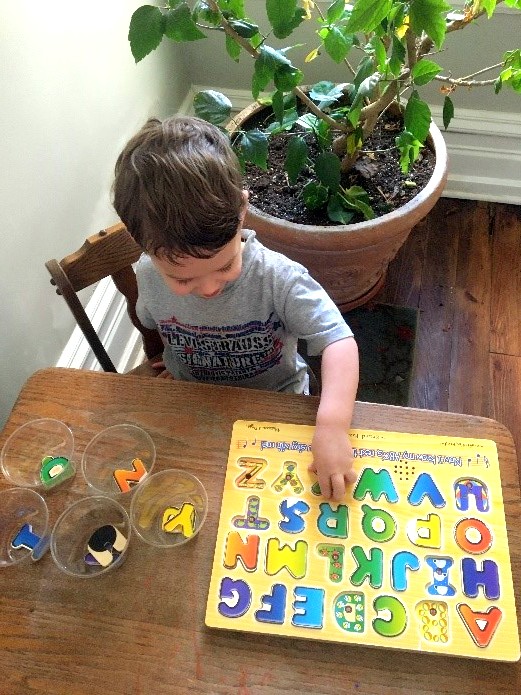Teaching Your Children Their ABC’s Without Them Realizing It
★★★★★
 For many of our private schools, kindergarten only runs several days of the week or starts in the second half of the school year and may have barely gotten a start before COVID-19 made its appearance and changed the school year forever. Many mothers who had no desire to homeschool now live with the challenging demands of schooling multiple children. Here are several easy ways to incorporate letters and sounds into the day.
For many of our private schools, kindergarten only runs several days of the week or starts in the second half of the school year and may have barely gotten a start before COVID-19 made its appearance and changed the school year forever. Many mothers who had no desire to homeschool now live with the challenging demands of schooling multiple children. Here are several easy ways to incorporate letters and sounds into the day.
Repetitive Alphabet Books
Find a book that goes through the alphabet and read it every day. Believe me, if someone tires of it, it is usually the adult. Children thrive on repetition and if you take the time to pause while you are reading, they often can fill in the next word or phrase for you. Any favorite ABC book can work, but my son’s current favorite is Chicka Chicka, Boom Boom. We have enjoyed it so many times together that he can “read” most of the book on his own.
ABC Manipulatives for Play
Have your child view the alphabet as simply another toy to play with. This provides opportunities for spontaneous learning.
- sponge letters in the bathtub
- magnetic letters on your refrigerator
- ABC playdough mats
- flashcards they can copy while writing in sand or shaving cream
- an ABC puzzle
As you are working in the kitchen or having them clean up their toys after bath, have them hand you the letter that you call for or sort the letters by colors. Currently, my oldest son’s favorite way to play with his alphabet is by matching the magnetic letter to the corresponding one that I drew on a magnetic cookie sheet from Dollar Tree. It shows the uppercase alphabet on the front and the lowercase alphabet on the back.
Identify Favorite People Or Objects By their Initial Letter/Sound
This is my son’s favorite way to identify his letters and sounds. The “A” is his cousin, “Addi’s letter.” The “K” is for his cousin “Karina.” The “G” is for “Grandma.” The “Z” is for his best friend “Zion.” We had to go with his xylophone for “X” and his bathtub toy fish for “F.”
You do not need any expensive supplies or a how-to-manual to have your child interact with language. However, it does take intentionality to surround your child with an environment that piques their interest in written words!
Leave a Reply